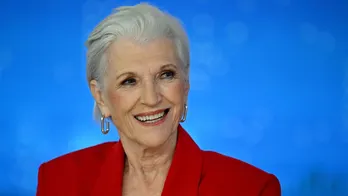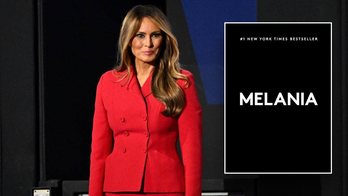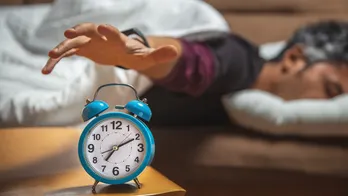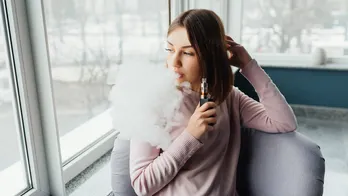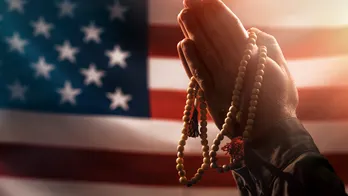Attacks on Brazil's schools — often by former students — spur a search for solutions
When the hatchet-wielding intruder's weapon tumbled from his hand onto the school floor, a 15-year-old student decided to take a chance. She confronted him, hoping others could escape out a nearby open door, and used her knowledge of jiu-jitsu — learned in free classes at a neighborhood park — to keep him from taking her down.
When he realized the others were fleeing, he stooped to pick up the hatchet and ran after them, as a second intruder armed with a gun made his way through the school. Ten lives were taken that day: five students, two school employees, an uncle of one of the attackers who owned a business nearby and the attackers themselves, who took their own lives.
This scene is not from the U.S., where this year alone 74 people have been killed or injured by guns in American schools. It's from Brazil, where on March 13, 2019, two former students attacked Raul Brasil State School in Suzano, a town in the state of São Paulo, in one of the deadliest school attacks in the country's history.
The Latin American nation had previously seen a relatively low number of attacks on schools — nowhere near as many as in the U.S. But a sharp increase in the past year has prompted national debate. In the eight months since August, there have been nine attacks. In the 20 years before that there were 13.
These 22 attacks on 23 schools (in one case the same perpetrator attacked two schools on the same day) have certain commonalities. All were carried out by students or former students. The attackers were white, male and ranged in age from 10 to 25. Nine of these attacks happened in the last eight months, including one on March 27 at a São Paulo elementary school where a 13-year-old student killed a teacher with a knife. An additional attack this week, by an axe-wielding man on a daycare center, was an outlier in that he appeared to have no connection to the school where he killed four children.
The nation is currently trying to determine why there's been an increase in school violence — and what can be done to prevent future tragedies. But for some, it's not enough. Rhyllary Barbosa de Sousa, the 15-year-old jiu-jitsu trained survivor, gives voice to what many Americans say:
"People are sad, they're shocked, they want to remember the victims, the people who died," she says. "But then the moment passes and they forget. They look away. They don't think about the possibility that this could happen again. Because when it happens once, it's shocking. When it happens a second time, it's still a shock. Once it happens a third, a fourth time, it already becomes normal. People say, 'Ah I knew it was going to happen again.' But it's not OK. It's a massacre. We're talking about lives. People are dying for nothing. They're being killed in a place that's supposed to be safe. But it isn't."
The new president cracks down on gun access
As one of his first acts as president, Luiz Inácio Lula da Silva signed a decree that repealed provisions in Brazil's firearms legislation that made access to guns and ammunition easier. The decree immediately suspended new gun registrations for personal use as well as for hunting and collecting, lowered the number of firearms and ammunition that could be purchased by those who still have permission and suspended the registration of new firing ranges, among other things.
Following the attack on the daycare center, the president announced a 150 million reais (almost $30 million) fund for states and cities to increase police patrols around schools. The federal government has also convened an emergency committee to discuss other possible measures to help prevent more attacks on schools, like social supports for students and families.
Following the March 27 attack in São Paulo, governor Tarcísio de Freitas made the same promise as his predecessor after the attack in Suzano four years ago: Police officers would not only patrol school neighborhoods but also the school buildings themselves. It was an idea put forward without any proof that it would protect students and staff — and was quickly criticized by experts and the public before being rejected.
A key question: Why is this happening more and more?
For experts in school violence, what's more important is not trying to confront intruders once they've already invaded schools but to understand why this is happening so attacks can be prevented.
Telma Vinha, an expert in educational psychology at the State University of Campinas, has started looking more closely at school attacks in Brazil, mapping when and where they occur, and following the online activity of attackers.
She looked specifically at attacks carried out by students or former students and identified several possible causes for this disturbing trend.
One of them is easier access to extremist communities online. Groups that focus on a love of firearms and incentivize violence, misogyny, racism, prejudice and vengeance used to be hidden on forums and channels in the deep web and were usually found by those specifically searching for them. But now such content is easily accessed on the internet everybody uses, including sites and messaging platforms like Telegram and Discord, often used by gamers.
"These communities seem welcoming, they listen, they make you feel like you belong," says Vinha. "These boys put a lot of value in that, so even if they act alone, they believe they're part of a movement [that calls for violence and attacks on schools], they feel like they're part of something bigger."
She has also identified additional factors that are possibly influencing the number of school attacks in the country – including the impact of the pandemic. In the wake of the school closures and increased isolation due to the Covid-19 pandemic, a study conducted in 2022 showed 70% of teachers said violence in the classroom increased when schools reopened. Vinha also points to a rise in support for the right to bear arms and, during the administration of former-President Jair Bolsonaro, the waiving of several restrictions that led to easier access to firearms in the country (the number of firearms licenses issued increased 473% in the last four years).
Other factors she cites as likely contributing to the rise in school violence: ideological attacks on the education system, the economic crisis and a lack of social and psychological support — like help with access to therapy, jobs, affordable food and housing, and sports and cultural programs — for students and their families.
There is also agreement that a copycat mentality is part of the problem. Attackers are often inspired by previous school massacres, including the April 1999 shooting at Colorado's Columbine High School, where two students killed 12 classmates and a teacher before dying by suicide. They idolize those who committed similar acts before them and make it clear in posts online, says Vinha, who monitored activity on social media and in online groups for her research. In those online groups they are encouraged to kill as many people as possible and to surpass the number of dead in previous attacks. They wear the same clothes as attackers before them, often with symbols that represent American white supremacy groups.
The 13-year-old student who carried out the March attack in São Paulo referenced the attack in Suzano on social media before taking a knife to school and killing a teacher. Once he attacked her, he tried to go after others but was restrained by teachers. The only reason he wasn't able to kill more people, experts say, is because he didn't have a gun.
On April 12, Justice Minister Flavio Dino announced Brazil would fine or suspend social media companies that do not properly regulate content related to attacks on schools. The country's Supreme Court is also currently reviewing the scope and validity of a 2014 law that says internet companies are not responsible for what users post unless the companies fail to comply with a removal order.
Firearms were used in 12 of the 22 attacks in Brazil, including the two most deadly the country has ever seen — in Suzano, where Sousa survived, and in the Rio de Janeiro neighborhood of Realengo, where, in April 2011, a former student killed 12 students between the ages of 13 and 15 before dying by suicide.
"[Attackers see] guns as instruments of glory," says Carolina Ricardo, executive director at Instituto Sou da Paz, a nonprofit working toward more effective public policy related to security and the prevention of violence. "It's more lethal and it's a way to brag, to show power."
More security, says Vinha, including increased police presence is a solution that is often offered, but without any evidence that they would reduce attacks in schools. She and Ricardo both think that what could prevent more school attacks from happening in Brazil is better public policies with a focus on the well-being of young people. They suggest restricted access to guns, better basic social and mental health services for students and their families, and sports and cultural programs for students as a good place to start.
Vinha also says the negative view of schools — many right-wing Brazilians have in recent years voiced concern over subjects like politics and gender being discussed in schools, two topics they believe should be taught at home — and their role in students' lives also needs to shift. School is often the only place students regularly frequent outside their home, so it needs to be a place where they feel heard and where conflicts can be resolved, says Vinha, noting that methods to mitigate and deal with bullying and fighting should be taught to educators. She also suggests regular discussions among students about their problems, both in groups and one-on-one with reliable peers, could help.
"Instead of being a culture of supervision, it has to be a culture of care," she reiterates.
Sousa agrees. Jiu-jitsu saved her life more than once. She struggled after the attack and considered dying by suicide. She says it was the sport she loved and the people who practiced it with her that supported her and helped her see there was still reason to live.
Unfulfilled promises
Authorities made a lot of promises in the aftermath of the attack on Raul Brasil but didn't follow through. The state said it would introduce 57 psychologists and 28 social workers directly into the public school system, but that never happened. It also created Conviva SP, a program meant to give the 3.5 million students who attend public schools run by the state access to psychologists for therapy.
As of February, the program was staffed with just 300 psychologists. São Paulo's current government has since suspended the program until it can hire enough professionals to see all those in need. It has also promised to hire another 5,000 mediators to help prevent violence in schools. Currently there are 500.
The only time Sousa saw a psychologist was when she returned to Raul Brasil a week or two after the attack to collect the belongings she left behind. Several professionals were at the school to speak with survivors and one convinced her to talk.
"He asked me things like, 'Are you OK?' and 'How are you feeling'" she says. "I thought, 'I just lived through a massacre, why are you asking me if I'm OK?'"
Now, at 19, Sousa has good days and bad. It's been a slow recovery, she says, but she's made it through. She still does jiu-jitsu and is working toward her black belt — "I have my blue belt now, so I should be able to get it by the time I'm 24," she says.
Her next goal is to start studying psychology this year. After that, she plans to get a law degree and to eventually become a police officer.
"I want to work with these types of people, with these types of teenagers," she says, referring to those who end up attacking schools. "I want to understand them better so that massacres like the one here in Suzano don't happen again. I'm tired of waiting for others to do something. I want to be part of the solution. I want to overcome it."
Jill Langlois is an independent journalist based in São Paulo, Brazil. She has been freelancing from the largest city in the western hemisphere since 2010, writing and reporting for publications like National Geographic, The New York Times, The Guardian and Time. Her work focuses on human rights, the environment and the impact of socioeconomic issues on people's lives.
Disclaimer: The copyright of this article belongs to the original author. Reposting this article is solely for the purpose of information dissemination and does not constitute any investment advice. If there is any infringement, please contact us immediately. We will make corrections or deletions as necessary. Thank you.


